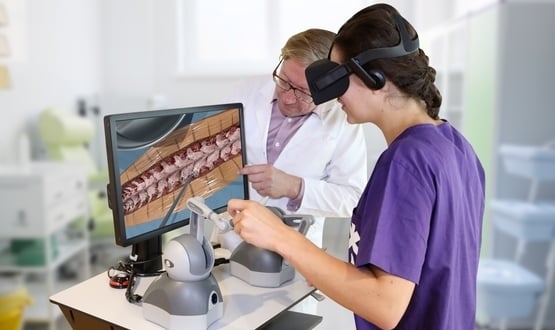VR Surgery
Overview
Virtual Reality (VR) Surgery at Indotaj Medical Care offers an innovative approach to surgical procedures, combining advanced technology with medical expertise to enhance patient care. VR Surgery involves the use of virtual reality technology to simulate surgical procedures in a realistic and immersive virtual environment.
Indotaj Medical Care is committed to integrating cutting-edge technologies like VR Surgery to elevate the standards of patient care, surgical training, and overall healthcare delivery. If you have specific questions or would like more information, please feel free to ask.
Indotaj Medical Care is committed to integrating cutting-edge technologies like VR Surgery to elevate the standards of patient care, surgical training, and overall healthcare delivery. If you have specific questions or would like more information, please feel free to ask.

Why it's done
VR Surgery may be recommended for several reasons, including:
- VR allows surgeons to visualize a patient’s anatomy in three dimensions, aiding in detailed preoperative planning. This helps in understanding the complexities of the surgical site and strategizing the procedure.
- VR simulations serve as valuable tools for training and educating surgeons. They provide a realistic and immersive environment for practicing surgical techniques, improving skills, and mastering procedures before performing them on actual patients.
- VR simulations enable surgeons to identify potential complications and challenges associated with a specific surgery. This proactive approach helps in developing strategies to mitigate risks and improve patient safety.
- VR Surgery allows patients to visualize the planned surgical procedure, understand the steps involved, and comprehend potential outcomes. This visual information enhances patient education and contributes to informed decision-making.
- VR technology assists in creating personalized and patient-specific treatment plans. Surgeons can tailor procedures based on the individual anatomy and condition of each patient, optimizing surgical outcomes.
- For surgical residents and medical professionals, VR Surgery accelerates the learning curve. It provides a controlled and risk-free environment for practicing and refining surgical skills.
Risk
VR Surgery can pose potential risks and complications. Some of these include:
- Simulation Fidelity
- Technical Issues
- Human Factor Limitations
- Overreliance on Simulation
- Cybersecurity Concerns
- Motion Sickness
- Patient-specific Variability
- Ethical Considerations
- Regulatory Compliance
How do I get ready for VR Surgery?
Preparing for VR Surgery involves several steps to ensure a smooth procedure and recovery:
- Learn about the VR headset, controllers, and any other equipment that will be used. Understand how to wear and adjust the headset for comfort.
- Get acquainted with the VR surgical simulation software. Practice navigating menus, selecting tools, and interacting with the virtual environment.
- Ensure that the VR equipment is in good working condition. Check for software updates and perform any necessary system checks to prevent technical issues during the simulation.
- Customize VR settings based on your preferences and comfort level. Adjust visual and control settings to optimize the experience for your needs.
- If VR Surgery involves collaborative efforts, communicate effectively with team members. Establish clear communication channels and understand each team member’s role.
- If VR Surgery involves patient communication or education, practice effective communication skills. Ensure that patients understand the purpose and potential benefits of the VR experience.


